As someone with a busy schedule, finding meals that are both quick and delicious can feel like a challenge. But what if I told you there’s a way to make every pasta night a guaranteed success? In this guide, I’ll share professional tips and tricks to help you cook fusilli pasta perfectly every time.
You’ll discover the secrets to achieving the ideal texture, learn about the best sauce pairings, and even explore creative serving ideas. By the end, you’ll not only master cooking fusilli but also have a go-to meal that’s easy, versatile, and guaranteed to impress. Let’s get started!
Table of Contents
Understanding Fusilli Pasta and Its Unique Characteristics
Fusilli pasta is loved for its spiral shape. This shape is not just pretty; it also affects how the pasta works with sauces and ingredients. Let’s explore the different types of fusilli and why its shape is key for cooking.
Different Types of Fusilli Available
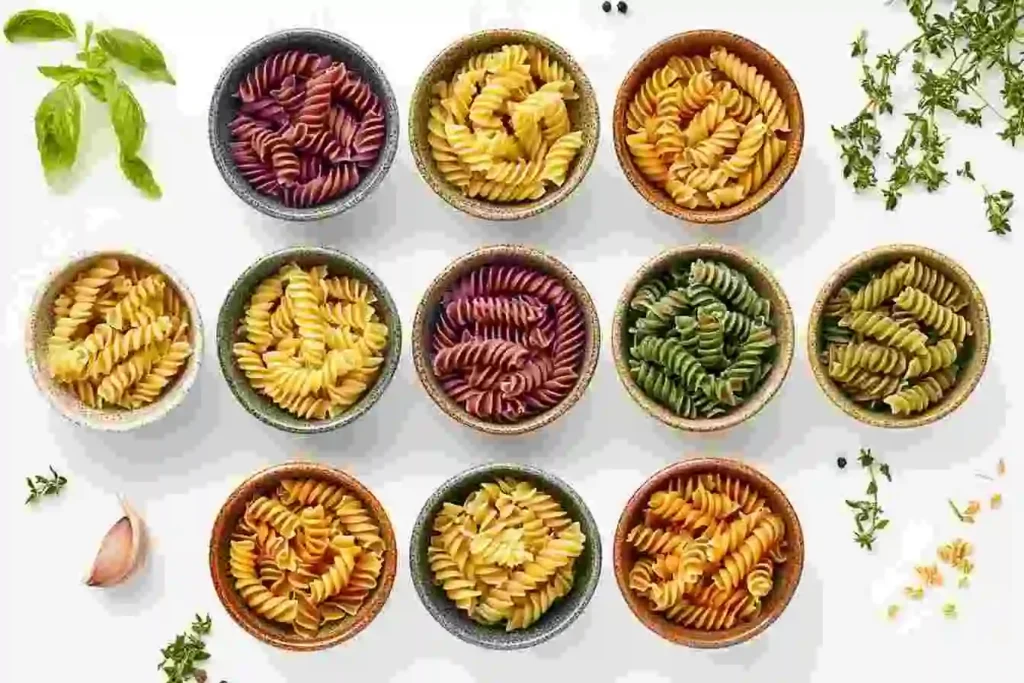
Fusilli comes in many forms, like whole wheat and gluten-free options. These are made from rice or other grains. The spiral shape ties all these types together, showing their versatility in dishes.
- Traditional Whole Wheat Fusilli
- Gluten-Free Fusilli (made from rice, corn, or other gluten-free grains)
- Flavored Fusilli (e.g., spinach, tomato, or herb-infused)
Why Fusilli’s Spiral Shape Matters for Cooking
The spiral shape of fusilli is more than just pretty. It helps sauces and ingredients stick to the pasta, which guarantees every bite is bursts with flavor. It’s perfect for chunky sauces that cling to the pasta’s shape. The ridges and spirals of fusilli also trap small ingredients like vegetables, meats, or herbs, enhancing the texture and complexity of each dish. This makes it a go-to choice for hearty and creative recipes.
Nutritional Benefits of Fusilli
Fusilli, like many pastas, is nutritious. Whole wheat fusilli is rich in complex carbs, fiber, and vitamins. Gluten-free options are great for those with dietary needs, offering a tasty and healthy pasta choice.
| Nutrient | Whole Wheat Fusilli (1 cup, cooked) | Gluten-Free Fusilli (1 cup, cooked) |
|---|---|---|
| Calories | 174 | 221 |
| Carbohydrates | 35g | 42g |
| Fiber | 6g | 2g |
| Protein | 7g | 3g |
Whether you choose whole wheat or gluten-free fusilli, it gives a special taste experience. Its spiral shape and nutritional benefits make it a great choice for many pasta dishes.
Essential Ingredients and Equipment for Cooking Fusilli Pasta
For perfect fusilli pasta, you need the right ingredients and tools. Quality fusilli ingredients and the right kitchen tools are key. They make your pasta dish delicious and satisfying.
Necessary Ingredients
- Fusilli pasta: Look for pasta made with ‘bronze-cut’ dies, which creates a rougher texture that sauce clings to beautifully.
- Extra-virgin olive oil: it adds a nice flavor and helps prevent sticking.
- Kosher salt: The right salt enhances flavor and seasons the water.
- Fresh herbs (optional): Herbs like basil, parsley, or oregano add a fresh touch.
Essential Equipment
- Large pot: Choose a pot big enough for the water needed to cook the pasta.
- Wooden spoon: A sturdy spoon is great for stirring and tossing the pasta.
- Colander: A colander is key for draining the pasta, removing excess water.
- Tongs or fork: These tools help transfer cooked pasta to the serving dish.
With the right cooking fusilli pasta ingredients and tools, you’ll make a delicious fusilli pasta dish every time.
| Ingredient | Quantity | Purpose |
|---|---|---|
| Fusilli Pasta | 1 pound (454g) | The main component, providing shape and texture. |
| Extra-Virgin Olive Oil | 2 tablespoons | For finishing the pasta or making the sauce. |
| Kosher Salt | 1 tablespoon | Seasons the pasta cooking water, enhancing taste. |
| Fresh Herbs (optional) | 1/4 cup, chopped | Adds a fresh, aromatic touch. |
Step-by-Step Guide to Cooking Perfect Fusilli
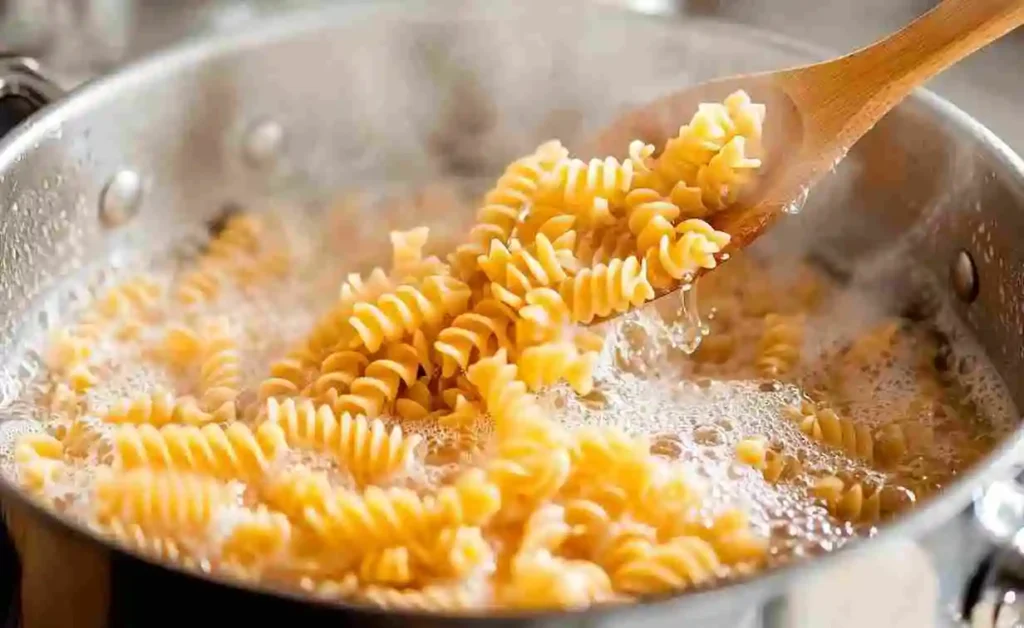
Cooking perfect fusilli pasta is easy with a few steps. Let’s explore how to make your cooking fusilli experience great.
1- Water-to-Pasta Ratio
The right water-to-pasta ratio is key for fusilli pasta. Use a big pot and fill it with 4 to 6 quarts of water for every 8 ounces of dry fusilli pasta. This much water helps the pasta cook evenly and prevents it from sticking.
2- Proper Salt and Oil Usage
Before adding the fusilli pasta, salt the water well. This seasons the pasta from the inside. Generously salt the water once it’s boiling. A good rule of thumb is “1 tablespoon of kosher salt for every 4-6 quarts of water”. This seasons the pasta from the inside out as it cooks.
3- Timing and Testing for Al Dente
Timing is everything for fusilli pasta texture. Boil the water before adding the fusilli pasta. Cook as the package says, usually 8 to 12 minutes. To check if it’s al dente, try a piece a minute or two before it’s done. It should generally feel tender but has a firm bite, a texture known as al dente.
Reserve Pasta Water (The Secret to a Perfect Sauce!)
This is the most important step for a restaurant-quality dish. Before you drain the pasta, use a mug or heatproof measuring cup to scoop out and save about a cup of the starchy cooking water.
This cloudy water is liquid gold; the starch in it will help the sauce bind perfectly to the fusilli, creating a silky, cohesive texture instead of a watery one. You will add a splash of this reserved water to your pan when you combine the pasta and the sauce.
Pro-Tip: Do not add olive oil to the pasta water. While a common myth, oil coats the pasta and prevents your delicious sauce from clinging to it properly. The key to preventing sticking is using plenty of water and stirring occasionally.
By following these steps, you’ll always cook perfect fusilli pasta. This leads to a tasty and fulfilling meal.
Best Sauce Pairings and Serving Suggestions
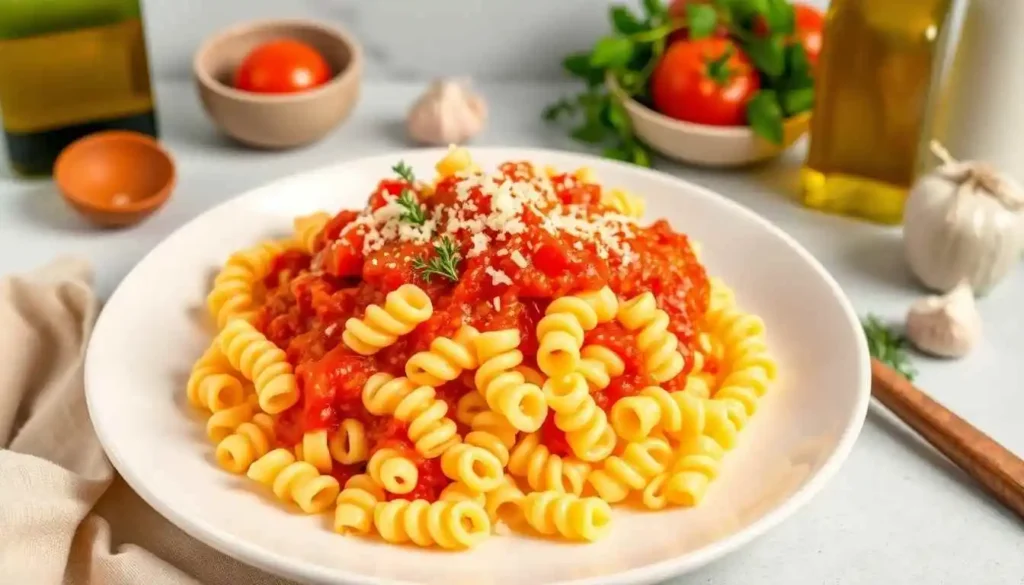
Fusilli’s spiral shape and firm texture are perfect for many sauces. You can try classic Italian tomato sauces, creamy alfredo, or pesto. Pair it with Rao’s Homemade Marinara Sauce or Barilla’s Pesto Alla Genovese for a true Italian taste.
Want to try something new? Mix fusilli with lemon-garlic olive oil sauce or a hearty ragu with Italian sausage and mushrooms. It also goes well with roasted vegetable sauces, like red pepper or zucchini. The key is to let the fusilli’s shape enhance the sauce’s flavors.
Be creative with serving fusilli. It’s great in pasta salads, layered baked dishes, or as a base for pasta primavera. Add Parmesan, toasted breadcrumbs, or fresh herbs to make it look and taste better. Fusilli is a versatile pasta that will quickly become a favorite.
Fusilli’s spiral shape also makes it ideal for capturing sauces with varied textures, like chunky tomato-based sauces or creamy blends with herbs and spices. For a vibrant twist, toss it with a citrus vinaigrette and fresh arugula for a refreshing pasta salad. If you’re in the mood for comfort food, try layering it in a cheesy baked casserole with béchamel sauce and spinach. No matter the preparation, fusilli’s unique shape ensures a flavorful bite every time.
For more sauce ideas, check out our Guide to Pasta Sauce Recipes with delicious homemade options.
Conclusion
In conclusion, cooking perfect fusilli pasta doesn’t have to be a daunting task. With a few simple tips and tricks, you can create a meal that’s not only quick but also packed with flavor and nutrition. Whether you’re opting for traditional, whole wheat, or gluten-free fusilli, its spiral shape makes it a versatile choice for all kinds of sauces, from chunky marinara to creamy pesto.
By understanding the best cooking techniques and pairing it with the right ingredients, you’ll be able to impress your family with delicious pasta dishes every time. So, next time you’re looking for an easy and satisfying meal, reach for fusilli—it’s a simple, yet delicious solution for busy nights! Don’t be afraid to get creative with your sauces and toppings, as fusilli can elevate almost any dish. With these tips in your back pocket, you’ll be cooking like a pasta pro in no time!
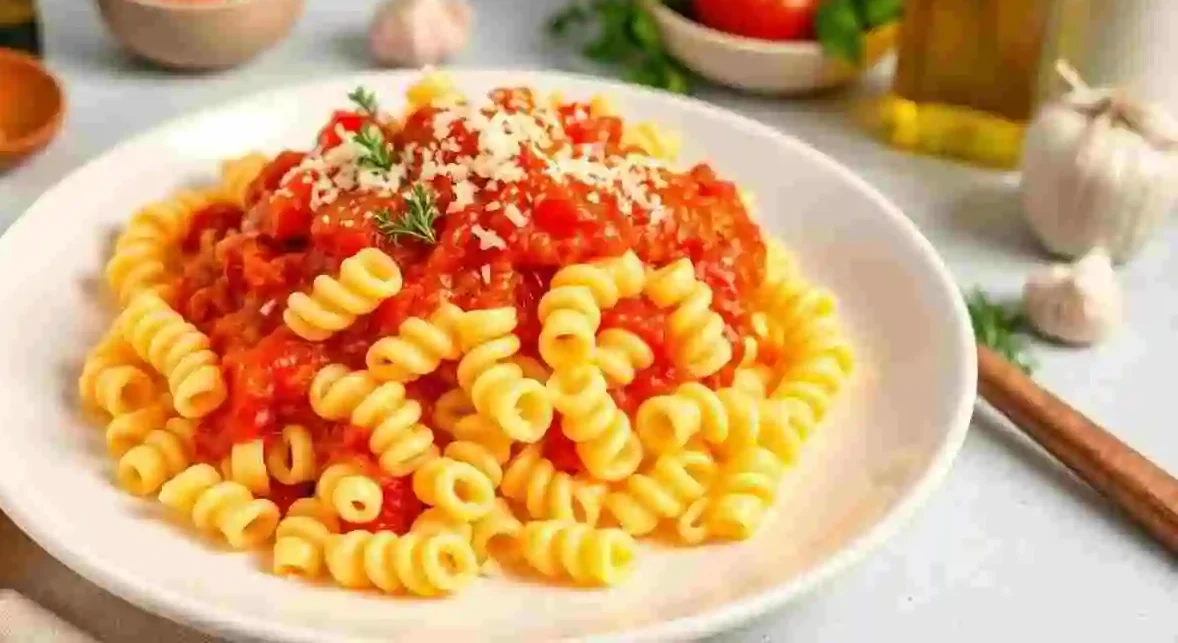
How to Cook Perfect Fusilli Pasta
Ingredients
Equipment
Method
- Fill a large pot with 4 to 6 quarts of cold water. Using enough water is key to preventing the pasta from sticking together.
- Place the pot on high heat and bring to a rolling boil. Do not add the pasta until the water is fully boiling.
- Once boiling, add 1 tablespoon of kosher salt. This seasons the pasta from the inside out as it cooks. Do not add oil to the water, as it will prevent the sauce from clinging to the pasta.
- Add the fusilli to the boiling water and stir immediately with a wooden spoon or tongs for about 30 seconds to prevent the spirals from sticking.
- Cook according to package directions, typically 8-12 minutes. Stir occasionally. Start testing for doneness a minute or two before the recommended time. The pasta is perfectly cooked when it is ‘al dente’—tender, but still firm to the bite.
- Before draining, use a mug to carefully reserve about one cup of the starchy pasta water. This is a crucial step for creating a silky, restaurant-quality sauce.
- Drain the pasta in a colander. Do not rinse it. Immediately toss the hot pasta with your favorite sauce, adding a splash of the reserved pasta water as needed to help the sauce bind to the fusilli. Garnish with fresh herbs and serve immediately.
Notes
Pro Tips for Perfect Pasta:
- Don’t Use Oil in the Water: It’s a common myth! Oil makes the pasta slippery and prevents sauce from adhering properly. A large pot of water and stirring are all you need to prevent sticking.
- The Power of Pasta Water: The cloudy, starchy water you reserved is liquid gold. The starch helps emulsify your sauce, creating a smooth consistency that clings beautifully to every spiral of the fusilli.
- Sauce Pairings: The spiral shape of fusilli is excellent for capturing chunky meat or vegetable sauces, creamy alfredo, or vibrant pesto. Let the pasta’s shape do the work!
FAQ
What is the difference between fusilli and other types of pasta?
Fusilli pasta has a unique spiral shape. This shape helps it hold onto sauces better than straight pasta. It also offers a fun texture and feel in your mouth.
How can I tell if I’m buying high-quality fusilli?
Choose fusilli made from quality semolina flour. It should have a uniform spiral shape. Stay away from misshapen or discolored fusilli, as they might be lower quality.
What are the nutritional benefits of eating fusilli pasta?
Fusilli is rich in complex carbs, giving you lasting energy. It can also have extra fiber, protein, and nutrients, depending on the type.
How much water should I use when cooking fusilli?
Use 4-6 quarts of water for every pound of dry fusilli. This allows pasta to move freely and cook evenly.
How do I know when my fusilli is cooked to the perfect al dente texture?
Check a piece of fusilli 2 minutes before the package says to. It should be a bit firm, yet still tender. Notice; it will get mushy if it’s overcooked.
What are some of the best sauce pairings for fusilli pasta?
Fusilli goes great with thick sauces like bolognese, marinara, or pesto. Its shape also works well with creamy cheese sauces.
Can I use fusilli in cold pasta salads?
Yes! Fusilli’s spiral shape is perfect for holding onto dressing and ingredients in pasta salads. It adds texture and allows the salad to be packed with flavor, whether you’re using a creamy or vinaigrette-based dressing.
How can I store leftover cooked fusilli?
To store leftover fusilli, place it in an airtight container in the fridge for up to 3 days. Before storage, it’s better to toss it with some olive oil so to keep it from sticking. Reheat it gently with a splash of water or sauce to keep it from drying out.

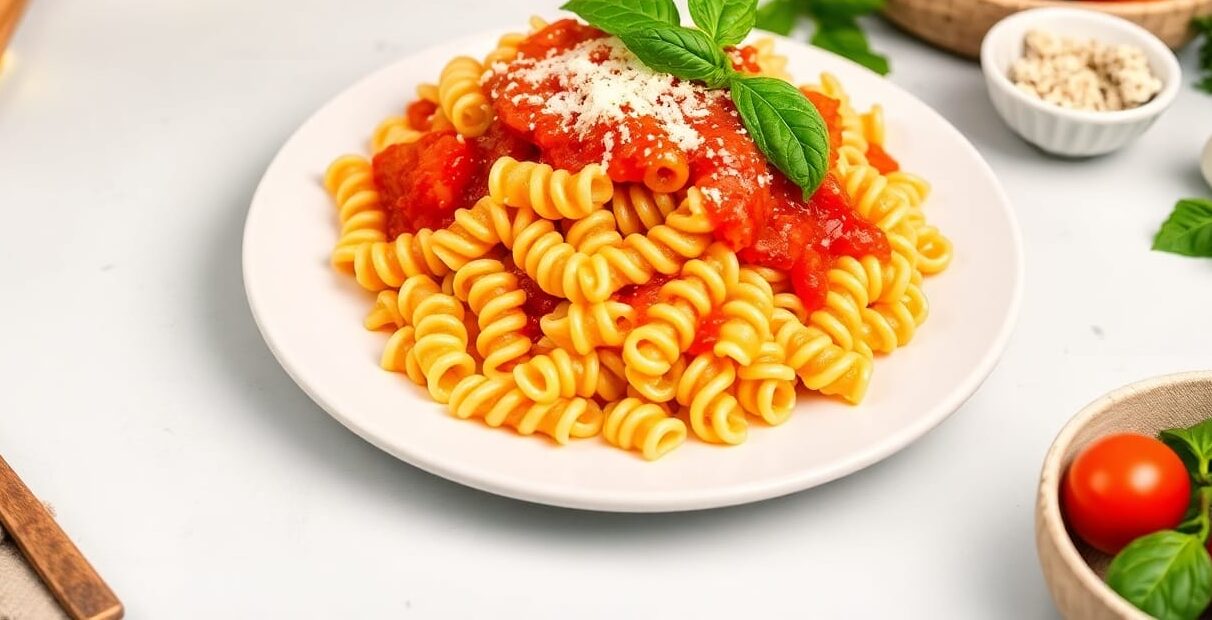
1 thought on “How to Cook Perfect Fusilli Pasta Every Time”